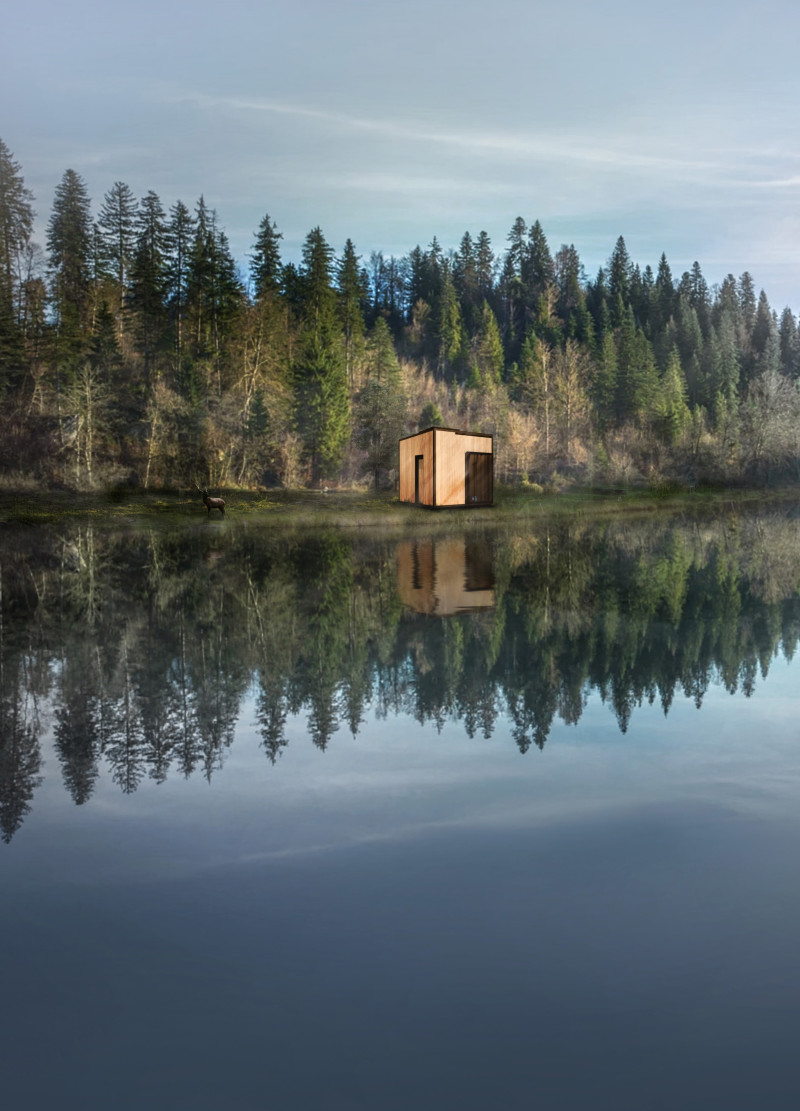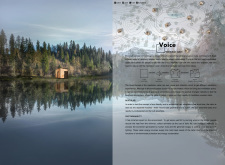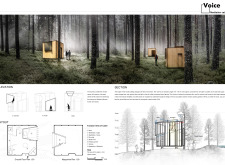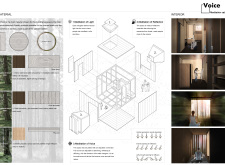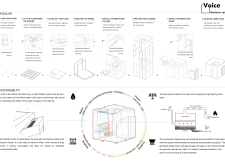5 key facts about this project
The meditation cabin is designed to fit into its natural surroundings while promoting a deep connection between its users and the environment. Located in a peaceful forest area, this small structure covers less than 15 square meters and serves as a retreat for meditation and self-reflection. The concept is guided by the theme of "voice," influencing both its shape and purpose. By combining a cube structure with sound tubes of varying geometries, the cabin offers an immersive atmosphere for individuals to express their thoughts and feelings in harmony with nature.
Spatial Organization
The cabin's interior is thoughtfully arranged to enhance the user experience. It contains three distinct areas, each focusing on different types of meditation: light, voice, and reflection. The Meditation of Light area utilizes open skylights that allow abundant natural light to fill the space, creating a calming environment. In the Meditation of Voice, adjustable sound plates offer custom acoustic experiences, letting users engage with the sound in various ways. The Meditation of Reflection employs reflective surfaces to visually connect occupants with the forest, encouraging a greater appreciation for the outdoor setting.
Sustainability Features
Sustainability is a core aspect of this design. The cabin's roof is angled at five degrees to improve rainwater collection, providing a practical resource for daily use. Natural ventilation is facilitated by strategically placed windows that promote airflow while bringing in light. The heating system works with recycled wood, contributing to energy efficiency, and biological methods turned waste into biogas for cooking and lighting. Together, these features significantly lessen the impact on the environment.
Material Selection
Wood is the main construction material used in the cabin. This choice supports the design's focus on sustainability and aligns with cultural ties to the region, particularly in Latvia. The use of wood not only provides strength to the structure but also adds warmth and comfort to the meditation space.
The cabin's exterior reflects a minimalist design, characterized by clean lines and simplicity. This approach helps the structure blend with its surroundings. Throughout the day, the way light interacts with the surfaces of the cabin enhances its visual character, creating a tranquil setting for meditation.


